Project X
The proverbial City of Tomorrow Disney envisioned was not originally known as EPCOT but instead Project X. The company secretly acquired over 27,000 acres of Florida land in hopes of crafting a future utopia. EPCOT stood for Experimental Prototype Community of Tomorrow, and the company’s visionary founder had been obsessed with this ambitious idea for a decade by the time they finally purchased the land.
Monorails were considered a key aspect of the future community. While the one at Disneyland originally lacked novelty, its advancement into the actual transportation stage was successful beyond Disney’s wildest dreams. He planned to incorporate the premise while adding new elements to solve the issues of traffic and transportation once and for all.
Guests would arrange their own travel to Orlando, Florida. At that point, Disney employees would greet them – in their own language, no less – and craft an itinerary for the duration of the visit. With the plans finalized, the EPCOT guest would take the monorail to the City of Tomorrow. Inside the city limits, the PeopleMover would address all intra-city transportation. It was a plan so brilliant that it would stand out just as much today as it did fifty years ago when it was announced.
Building a monorail on water
As Walt Disney plotted strategy for building his dream city of tomorrow, EPCOT, the first step was the introduction of Walt Disney World. The theme park opened in 1971, a dozen years after the original Mark I line at Disneyland. Since there were already three generations of monorails in existence, Disney Imagineers had detailed information about the best tactics for monorail design. The problem is that the state of Florida offered different challenges.
In California, WED Enterprises had free reign with their construction. They built Disneyland on 160 acres that had previously stood as orange groves, 30 minutes south of Los Angeles. There were no topographical restrictions for the build, so they included their own in order to highlight the potential of a monorail system. It featured seven perfect grades and curvatures of 120 feet in radius, none of which was needed to the overall quality of the land.
The Orlando build was quite a bit trickier. With the parking lot on the opposite side of the water from the park, the monorail is not just ornamental in Orlando. While the Disneyland course primarily travels through the park itself, the Disney World version needed to transfer guests across Seven Seas Lagoon. Boats were the plain solution, but theme park tourists expected another world-famous monorail at the new Florida locale. Walt Disney wasn’t about to disappoint, but fate intervened.
Death of a dreamer but not a dream
In 1966, Walt Disney’s death robbed the world of the bold dream of Project X. After he died, the project proved unsustainable without his force of will. As a newpaper headline viciously but accurately stated, “EPCOT Died Ten Minutes After Walt's Body Cooled.”
Disney World was also temporarily imperiled by its creator’s death. Walt’s older brother, Roy, interceded by taking the helm of a company from which he had previously announced his impending retirement. While Walt didn’t live to see the park’s debut, his fingerprints were all over its design, and Roy ensured his brother’s dream would live on to inspire future generations. Roy even slightly altered the name of the new resort by adding a single word to Disney World, Walt.
Walt Disney left behind a legacy, and a lot of the plans in Orlando were lofty, especially the ones for the latest “highway in the sky.” He viewed it as the first step toward his city of tomorrow. Bob Gurr once again took the lead in building the latest monorail, the Mark IV. His explicit instruction from his boss was to take advantage of the lake crossing. The monorail should make guests feel as if they’re leaving the real world behind the moment they step onboard to journey to Walt Disney World.
Walt Disney World - Mark IV
The blueprint Disney left Gurr was “specifically vague.” The company founder notoriously knew precisely what he wanted yet left his plans ambiguous. His preferred management style was to lead his employees to his way of thinking rather than dictate ideas. In this fashion, they’d discover the same positives that he’d known all along. It added to the communal nature of the creative process.
Once the vision for EPCOT died, the adaptation to Walt Disney World operated fairly smoothly. The company included many of the world’s foremost experts on monorail technology, and Gurr was the greatest of them all. He determined that the ideas of the Disneyland monorail were still sound, so very few adjustments were required.
The trick with the Orlando rail system is the space required. Whereas the Disneyland track only covers two-and-a-half miles, Walt Disney World’s monorail must crisscross 14.7 miles. When it debuted in 1971, it was a bit shorter, but the larger issue is the same. The need to transport guests from multiple entry points across a huge area requires a larger monorail system. In order to solve the problem, Orlando features a dual-beam track as opposed to the single-beam at Anaheim, cleverly doubling the potential rider capacity.
In 1971, the Walt Disney World tracks circled the Seven Seas Lagoon. The monorail made stops at Magic Kingdom, the Transportation and Ticket Center, and two resorts. Disney’s Polynesian Village Resort and the Contemporary Resort Hotel were stopping points on the original route. The idea was for guests staying at the deluxe hotels to enjoy convenient transport to and from the park. Over time, the monorail added an additional stop at Disney’s Grand Floridian Resort & Spa.
The Contemporary Resort Hotel, as it was called in 1971, offers a dazzling feature that continues to impress even to this day. The monorail passes directly through the facility. Onlookers are treated to the shocking vision of a futuristic train passing right by their room. The feature has proven so popular that when Disney’s Grand Californian Hotel & Spa debuted in 2001, it mimicked the concept. The crucial difference is that guests cannot board a monorail at the Anaheim property, but they can walk right on the one that stops at the Contemporary’s boarding station.
The major physical addition to the Orlando monorail system occurred in 1982. With the debut of Epcot, Disney wisely expanded the track. The Transportation and Ticket Center near Disney’s Polynesian Village Resort was extended to service the new theme park. The aforementioned double-beam system comes into play with this track. The outer beam loop provides direct transport from Magic Kingdom to the Transportation and Ticket Center. Meanwhile, the inner beam loop stops at the three magic hotels, the Transportation and Ticket Center, and Magic Kingdom. It’s an elegant method to keep thousands of guests heading in the right direction at the same time.
Due to the massive length of the track and the sheer volume of guests at Walt Disney World, the Mark IV fleet had 10 trains, easily the most for a monorail up until that point. The monorail system featured five cars per train, and their primary distinguishing characteristic was a colored stripe. The vehicles were otherwise cosmetically identical. Each train cost $6 million to construct, making the Orlando monorail system the most expensive monorail project ever at the time. The Mark IV fleet largely remained in operation until 1989, although some survived until 1991.
Walt Disney World - Mark VI
If you visit Walt Disney World today, this is the fleet in operation. Oddly, the same is true if you visit Las Vegas. They contracted Bombardier Transportation to build the same trains as are used in Orlando. Their physical appearance is different, so it’s easy to distinguish the two monorails in pictures, though. Since Disney launched their new line in 1989, it’s fair to say that the company should be planning the next monorail iteration in the near future.
The Mark VI line is less expensive than the last iteration. Each train carries a price tag of $3.5 million. There are a dozen of them in the fleet, and each one contains six cars. For this reason, the current trains are over 200 feet long. The maximum capacity is 361 people, with 20 seated and 40 standing guests per car plus the tram operator.
Originally, the capacity was 365 people, with four guests allowed in the cab. Alas, two monorails collided in 2009, killing the pilot of one of the vehicles. It was the only monorail death in the history of its Disney operation, and as a safety precaution, cab guests are now prohibited. Disney’s North American monorails continue to require a human operator, though.
Marty Sklar, the famed International Ambassador for Walt Disney Imagineering, once said of Walt Disney, "Walt Disney had one foot in the past, because he loved nostalgia, and one foot in the future, because he loved new technology.” The monorail matches this description as well. The technology harkens back to the turn of the century, the LAST century. Somehow, it still feels like an early warning signal of a science-fiction utopia we’ve yet to create.
Every ride exemplifies how far Walt Disney stood beyond his peers. Something that existed only as a test track simulation in the mid-1950s now stands as one of the most recognizable staples of multiple Disney theme parks. Even today, monorails stand apart for their energy-efficiency, reliability, and stylishness. As one of the primary remnants of Walt Disney’s legacy, they remind visitors not just of the man but also of his epic vision.
The history of the monorail encapsulates all that is amazing about the founder of The Walt Disney Company. Walt Disney anticipated a problem years before his park opened to the public. He understood all too well that the problem with major roads is that everyone uses them.
From the moment Disney gazed upon his first hanging train, he envisioned a better tomorrow at Disneyland and then a utopian community in Florida. He appreciated that the Monorail would empower Disney theme parks with the ability to transfer their customers directly to company facilities without worrying about non-Disney traffic. In Orlando alone, people have ridden so many miles on the monorail that’s it the equivalent of 30 round-trips to the Moon, a statistic that Disney himself would love. The next time you enjoy a ride on the monorail, take a moment to appreciate the vision of the man who started it all with a mouse.
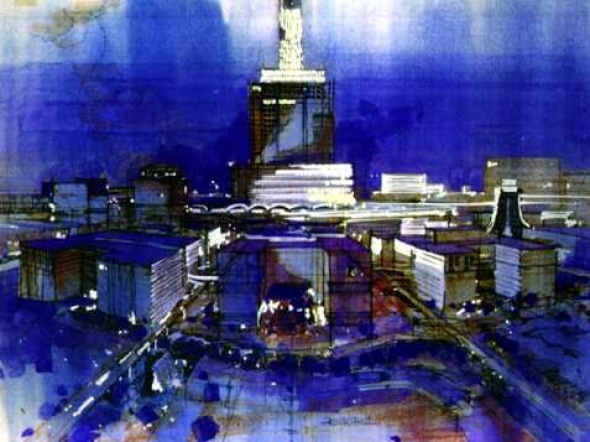
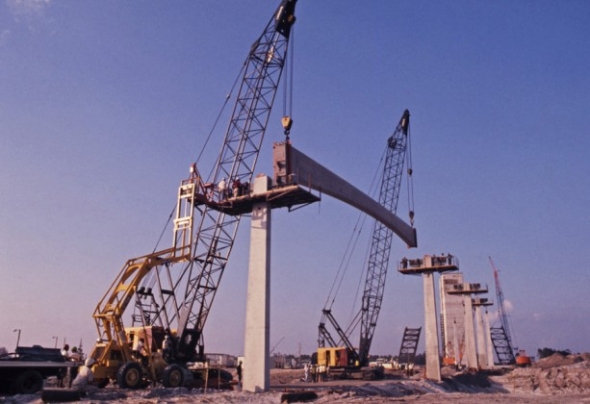
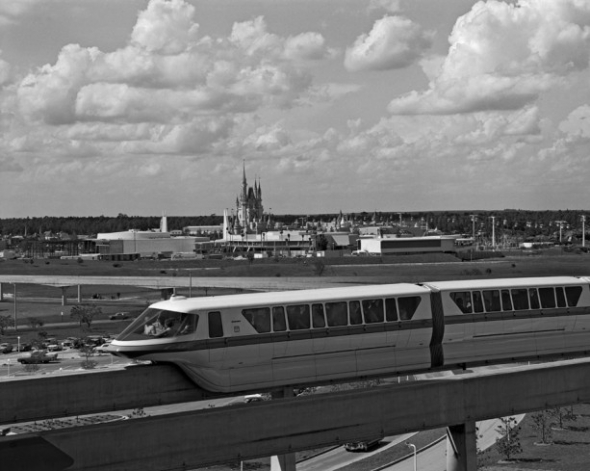
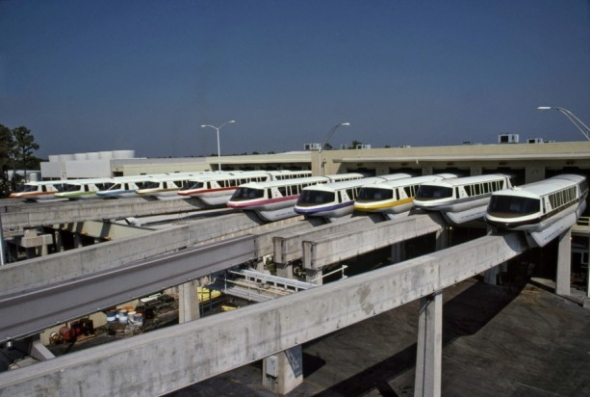
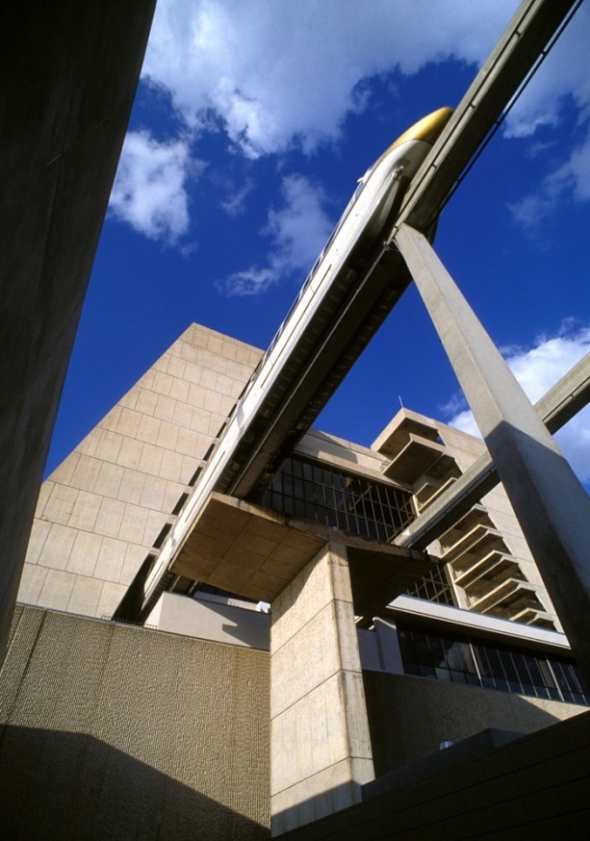
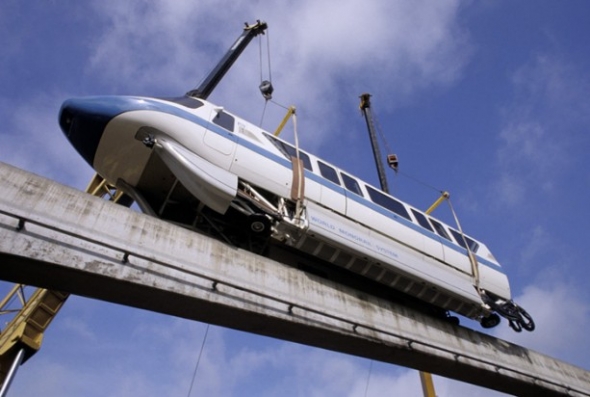
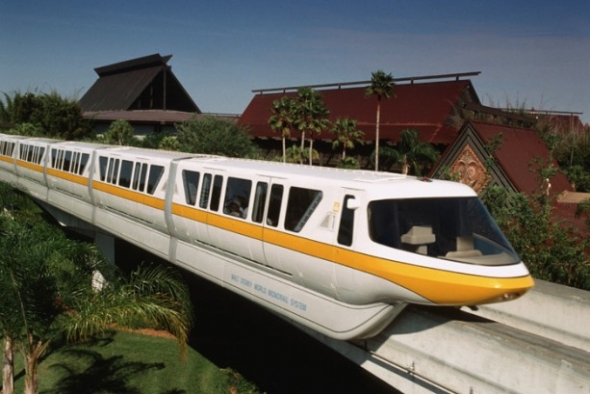

Comments
Having attended the original Disneyland soon after it was built in California, I realized my family and I had become addicted to the amazing theme park/s. By the time WDW was built in Florida, my family lived not far from there. Since I was the oldest of the kids and no longer living at home, I was drawn to returning often to visit the parks from my own home in Europe as often often as I could.
As soon as my own son was born, we brought him to Florida to meet the family, which meant not only Mom and Dad and my siblings, but also Mickey, Minnie, and the Gang!
One of my foremost memories of those earliest visits was when my son was just learning to talk, and to speak in English. Heading back on the flight to the Netherlands, we were surprised to hear him repeating some of the recorded messages from the monorail. In particular, he announced, "Please, no smoking in the monorail. Thank you." I'll bet it's been a while since you have heard that one!
The article was a bit too long for me to read but as a professional - great photos! The older ones have a true vintage feel :)
Not sure where your information came from regarding the propulsion system, however if you're referring to the Disney Alweg systems, your description is confusing at best. The Disneyland Alweg system uses two buss bars on the same side of the beam, and yes the skirt of the train covers them as it travels. But there is no "third rail" as most traditional electric trains utilize and it's not hidden. One buss bar is negative, and the other positive, supplying (not producing) 600 VDC to the train. I cannot speak to the materials used for the Disneyland buss bars, but the ones in Florida are steel-capped aluminum bars. Also in Florida, the buss bars sit below the skirts of the train with solid carbon collector shoes sliding along the buss bar. The electricity powers the motors that actuate the drive wheels, which are also the load-bearing tires riding along the top of the beam. Motors are a train's propellant (motors propel a train, not electricity).